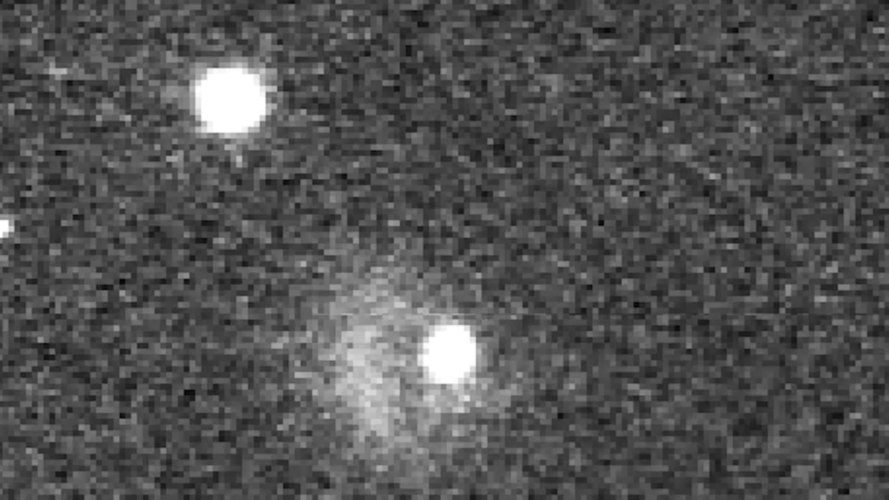Space News & Blog Articles
DART asteroid impact impresses in ESA’s view from the ground
 Video:
00:00:00
Video:
00:00:00
Last night at 23:14 UTC, NASA's DART spacecraft successfully struck asteroid Dimorphos, the 160-metre moonlet orbiting around the larger Didymos asteroid. About 38 seconds later, the time it took for the light to arrive at Earth, people all over the world saw the abrupt end of the live stream from the spacecraft, signalling that the impact had happened successfully – DART was no more.
Astronomers on a small slice of our planet’s surface, extending from southern and eastern Africa to the Indian Ocean and the Arabian Peninsula, could actually watch it live with their telescopes. Among those were a half dozen stations joined together for a dedicated observing campaign organised by ESA’s Planetary Defence Office and coordinated by the team of observers of the Agency’s Near-Earth Object Coordination Centre (NEOCC). As usual, when such a timely astronomical event happens, not all stations were successful in their observations: clouds, technical problems and other issues always affect real-life observations.
However, a few of ESA’s collaborating stations could immediately report a successful direct confirmation of DART’s impact. Among them was the team of the Les Makes observatory, on the French island of La Reunion in the Indian Ocean. The sequence of images they provided in real time was impressive: the asteroid immediately started brightening upon impact, and within a few seconds it was already noticeably brighter. Within less than a minute a cloud of ejected material became visible and could be followed while it drifted eastwards and slowly dissipated.
This video is from observations by the Les Makes Observatory in Le Reunion and shows in a few seconds what took place in under half an hour.
“Something like this has never been done before, and we weren’t entirely sure what to expect. It was an emotional moment for us as the footage came in,” explains Marco Micheli, Astronomer at ESA’s NEOCC.
Dora Föhring, another NEOCC Astronomer adds:
“This was the conclusion of weeks of discussions, meetings, accurate planning and observational design by our team, together with local observers and scientists at all our collaborating stations. This fantastic campaign has produced data that our astronomers, together with the whole DART collaboration, will now begin to analyse to extract valuable scientific information on the effects of the impact.”
As DART’s mission ends, the work begins for astronomers and scientists around the globe, and a new chapter opens for ESA’s Hera mission which now takes a leading role in studying up close the first-ever test of asteroid deflection.
“The results from DART will prepare us for Hera’s visit to the Didymos binary system to examine the aftermath of this impact a few years from now,” says Ian Carnelli, Hera Mission Manager.
“Hera will help us understand what happened to Dimorphos, the first celestial body to be measurably moved by humankind, and ultimately to protect ourselves from space rocks that could one day do the same.”
When you subscribe to the SpaceZE News Feed, we will send you an e-mail when there are new updates on the site so you wouldn't miss them.

